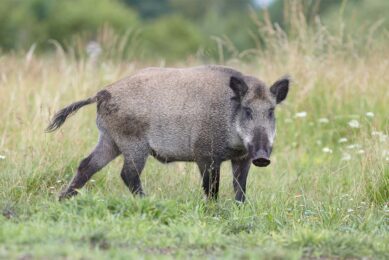ASF China: Rabobank predicts 30% reduction of pork

In a recent prediction of Rabobank, African Swine Fever is said to be decreasing the Chinese pork supply by 25 to 35%.
In the analysis, authored by the bank’s animal protein analysts, it is stated that the African Swine Fever (ASF) virus is affecting an estimated 150-200 million pigs. In doing so, the analysts say, the expected loss in pork production of 30% is nearly 30% larger than annual US pork production and equivalent to Europe’s annual pork supply.
The analysts continue to say that these losses cannot easily be replaced by other proteins (chicken, duck, seafood, beef, and sheep meat), nor will larger imports be able to fully offset the loss. “We believe this will result in a net supply gap of almost 10 million metric tonnes in the total 2019 animal protein supply.”
Regional pig prices converging
Inaccurate reports of Chinese herd liquidation and an early regional supply imbalance were disruptive to initial price discovery, obscuring the impact of production losses, the analysts wrote. As the government eased restrictions on the movement of animals (and pork), regional prices converged, but moved higher along with the herd loss. With the full magnitude of herd losses quantified, global protein customers are scrambling to secure long-term protein supplies.
The analysts stated that China’s herd-rebuilding will be slow and take years. Producers remain cautious given the risk of recontamination and are focused on improving biosecurity at remaining operations. Government support for rebuilding cannot convince producers who will in the end carry the bulk of the risk.
Pig production in South East Asia
As is well-known, ASF has also reached Vietnam and Cambodia. The analysts said: “Based on the commonalities with Chinese production, we expect these markets to suffer sizeable ASF herd losses (on a percentage basis) and experience similar difficulties in disease containment. Much of South East Asia will have difficulty repopulating its herd and securing provisional protein supplies. ASF losses in South East Asia will exacerbate global protein shortfalls, adding further upside pressure to global markets.”

Read more on pig health at the Pig Progress Health Tool
The bank’s analysts expected available global protein supplies to be redirected to China in an effort to satisfy the growing protein deficit: “This unprecedented shift in trade will likely create unexpected product shortfalls in markets previously served by these suppliers, creating short-term market volatility that will ultimately result in higher global protein prices.”
A secular shift towards lower Chinese pork consumption will support increased demand for poultry, beef, seafood, and alternative proteins that will shape global production trends.
Opportunities for pork exporters
The bank expected animal protein companies with an exportable surplus and access to markets in China and South East Asia stand to benefit from the impacts of ASF. The EU, the US, and Brazil appear best placed to respond to increased import demand for pork and other animal proteins into China and South East Asia.
Find more on ASF at our special minisite
Rabobank considered a few countries in particular. As ASF has also entered Europe, the potential for outbreaks to restrict exports from significant pork-producing countries, such as Germany, cannot be ruled out, the analysts wrote. Such restrictions would complicate the trade response to ASF in China and South East Asia.
Zooming in on the USA, Rabobank said that the current tariffs on US pork exports to China are restricting current trade. Further, the US is a major poultry producer and exporter, but cannot export to China due to a ban associated with avian influenza imposed in 2015.
Latest outbreaks in Western China
Far away from these realities, the Chinese Ministry of Agriculture and Rural Affairs (MARA) continues with incidentally reporting outbreaks. The most recent ones confirmed to the World Organisation for Animal Health (OIE) took place in the westernmost provinces of Xinjiang and Tibet. With that, all mainland provinces of China have been infected with ASF – only the island of Hainan has not confirmed any outbreaks yet.
Both in Xinjiang as well as in Tibet, a in total of 3 outbreaks have been confirmed. The 2 westernmost outbreaks in Xinjiang were found relatively close to China’s eastern borders. Officially the virus is now about 100km in a straight line from the border with Kyrgyzstan, 150km from Tajikistan, 200km from India and 230km from Afghanistan. To close off with a positive note – none of these countries are known for a predilection for pork.
 Beheer
Beheer








 WP Admin
WP Admin  Bewerk bericht
Bewerk bericht